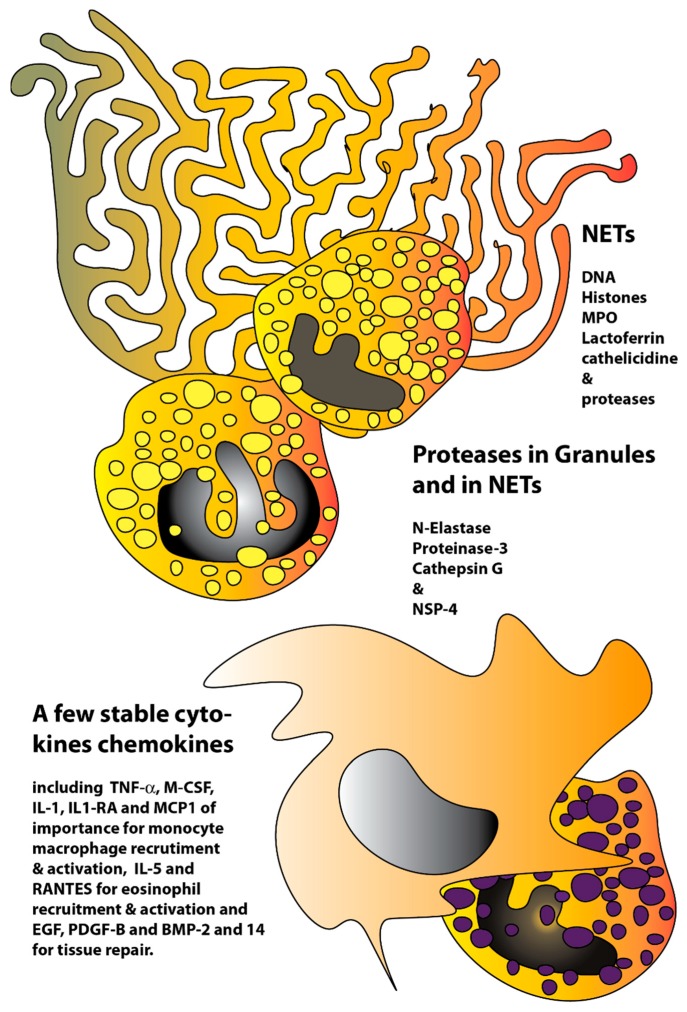Figure 4.
Schematic drawing of the site of infection involving neutrophils, neutrophil extracellular traps and the recruitment of monocytes/macrophages, neutrophils and possibly eosinophils. The picture shows two activated neutrophils with a neutrophil extracellular trap and an incoming monocyte-macrophage and an eosinophil. The neutrophil traps consist of neutrophil chromosomal and mitochondrial DNA to which histones and various neutrophil granule proteins are attached. In these traps, myeloperoxidase (MPO), lactoferrin, the antibacterial peptides including cathelicidine and defensins, as well as the various serine proteases have been found. The high resistance to cleavage of a few cytokines, chemokines and chemokine receptors observed (from Figure 2) indicate that these are particularly stable in order not to hamper the influx of monocytes/macrophages and possibly also eosinophils to assist the neutrophils to clear the infection.

